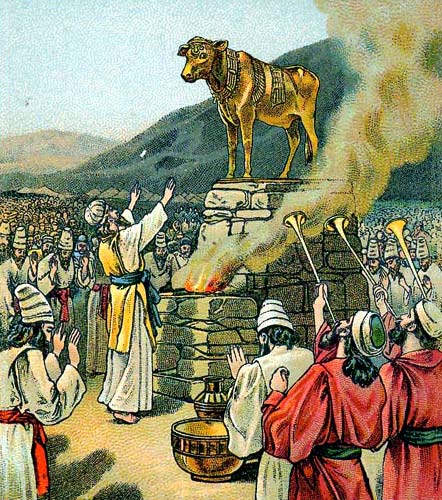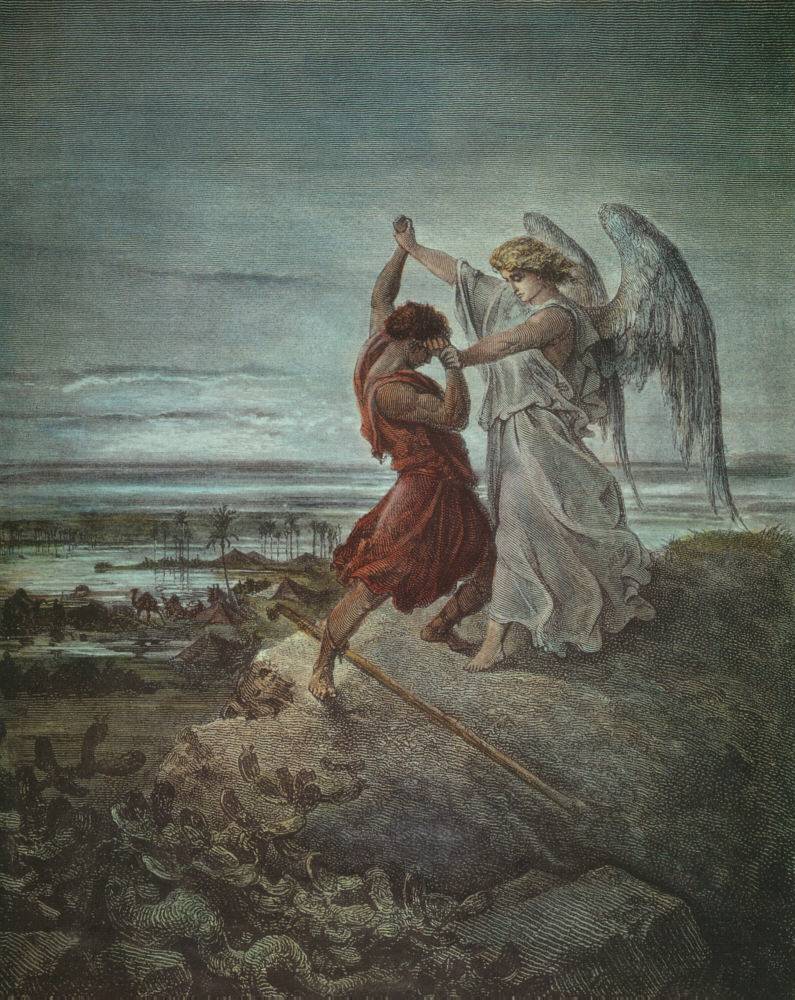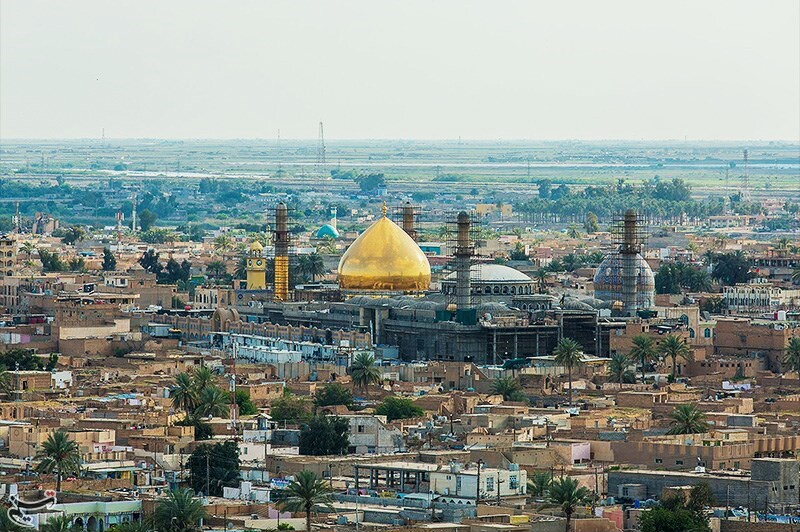|
Samiri (Islamic Figure)
Samiri or the Samiri () is a phrase used by the Quran to refer to a rebellious follower of Moses who created the golden calf and attempted to lead the Hebrews into idolatry. According to the twentieth chapter of the Quran, Samiri created the calf while Moses was away for 40 days on Mount Sinai, receiving the Ten Commandments. In contrast to the account given in the Hebrew Bible, the Quran does not blame Aaron for the calf’s creation. In the Quran In Ta-Ha, the Quran’s twentieth surah, Moses is informed that Samiri has led his people astray in Moses’ absence. He returns to his people to berate them, and is informed of what Samiri has done. :"They argued, “We did not break our promise to you of our own free will, but we were made to carry the burden of the people’s ˹golden˺ jewellery, then we threw it ˹into the fire˺, and so did the Sâmiri.” Then he moulded for them an idol of a calf that made a lowing sound. They said, “This is your god and the god of Moses, ... [...More Info...] [...Related Items...] OR: [Wikipedia] [Google] [Baidu] |
Quran
The Quran, also Romanization, romanized Qur'an or Koran, is the central religious text of Islam, believed by Muslims to be a Waḥy, revelation directly from God in Islam, God (''Allah, Allāh''). It is organized in 114 chapters (, ) which consist of individual verses ('). Besides its religious significance, it is widely regarded as the finest work in Arabic literature, and has significantly influenced the Arabic, Arabic language. It is the object of a modern field of academic research known as Quranic studies. Muslims believe the Quran was orally revealed by God to the final Islamic Prophets and messengers in Islam, prophet Muhammad in Islam, Muhammad through the Angel#Islam, angel Gabriel#Islam, Gabriel incrementally over a period of some 23 years, beginning on the Night of Power, Laylat al-Qadr, when Muhammad was 40, and concluding in 632, the year of his death. Muslims regard the Quran as Muhammad's most important Islamic view of miracles, miracle, a proof of his prophet ... [...More Info...] [...Related Items...] OR: [Wikipedia] [Google] [Baidu] |
Bible
The Bible is a collection of religious texts that are central to Christianity and Judaism, and esteemed in other Abrahamic religions such as Islam. The Bible is an anthology (a compilation of texts of a variety of forms) originally written in Hebrew, Aramaic, and Koine Greek. The texts include instructions, stories, poetry, prophecies, and other genres. The collection of materials accepted as part of the Bible by a particular religious tradition or community is called a biblical canon. Believers generally consider it to be a product of divine inspiration, but the way they understand what that means and interpret the text varies. The religious texts were compiled by different religious communities into various official collections. The earliest contained the first five books of the Bible, called the Torah in Hebrew and the Pentateuch (meaning 'five books') in Greek. The second-oldest part was a collection of narrative histories and prophecies (the Nevi'im). The third co ... [...More Info...] [...Related Items...] OR: [Wikipedia] [Google] [Baidu] |
People Of The Quran
The term "the people" refers to the public or common mass of people of a polity. As such it is a concept of human rights law, international law as well as constitutional law, particularly used for claims of popular sovereignty. In contrast, a people is any plurality of persons considered as a whole. Used in politics and law, the term "a people" refers to the collective or community of an ethnic group or nation. Concepts Legal Chapter One, Article One of the Charter of the United Nations states that "peoples" have the right to self-determination. Though the mere status as peoples and the right to self-determination, as for example in the case of Indigenous peoples (''peoples'', as in all groups of indigenous people, not merely all indigenous persons as in ''indigenous people''), does not automatically provide for independent sovereignty and therefore secession. Indeed, judge Ivor Jennings identified the inherent problems in the right of "peoples" to self-determination, as i ... [...More Info...] [...Related Items...] OR: [Wikipedia] [Google] [Baidu] |
Ancient Egyptian Jews
Ancient history is a time period from the beginning of writing and recorded human history through late antiquity. The span of recorded history is roughly 5,000 years, beginning with the development of Sumerian cuneiform script. Ancient history covers all continents inhabited by humans in the period 3000 BCAD 500, ending with the expansion of Islam in late antiquity. The three-age system periodises ancient history into the Stone Age, the Bronze Age, and the Iron Age, with recorded history generally considered to begin with the Bronze Age. The start and end of the three ages vary between world regions. In many regions the Bronze Age is generally considered to begin a few centuries prior to 3000 BC, while the end of the Iron Age varies from the early first millennium BC in some regions to the late first millennium AD in others. During the time period of ancient history, the world population was exponentially increasing due to the Neolithic Revolution, which was in full progr ... [...More Info...] [...Related Items...] OR: [Wikipedia] [Google] [Baidu] |
Golden Calf
According to the Torah, the Bible, and the Quran, the golden calf () was a cult image made by the Israelites when Moses went up to Mount Sinai (bible), Mount Sinai. In Hebrew, the incident is known as "the sin of the calf" (). It is first mentioned in the Book of Exodus. Sacred bull, Bull worship was common in many cultures. In Ancient Egypt, Egypt, whence according to the Exodus narrative, the Israelites had recently come, the bull-god Apis (deity), Apis was a comparable object of worship, which some believe the Hebrews were reviving in the wilderness. Alternatively, some believe Yahweh, the national god of the Israelites, was associated with or pictured as a sacred bull through the process of religious assimilation and syncretism. Among the Canaan, Canaanites, some of whom would become the Israelites, the bull was widely worshipped as the sacred bull and the creature of El (deity), El. Biblical narrative When Moses went up Mount Sinai (Bible), Mount Sinai to receive the Ten C ... [...More Info...] [...Related Items...] OR: [Wikipedia] [Google] [Baidu] |
Satan
Satan, also known as the Devil, is a devilish entity in Abrahamic religions who seduces humans into sin (or falsehood). In Judaism, Satan is seen as an agent subservient to God, typically regarded as a metaphor for the '' yetzer hara'', or 'evil inclination'. In Christianity and Islam, he is usually seen as a fallen angel or jinn who has rebelled against God, who nevertheless allows him temporary power over the fallen world and a host of demons. In the Quran, Iblis (Shaitan), the leader of the devils (''shayāṭīn''), is made of fire and was cast out of Heaven because he refused to bow before the newly created Adam. He incites humans to sin by infecting their minds with ''waswās'' ('evil suggestions'). A figure known as ''ha-satan'' ("the satan") first appears in the Hebrew Bible as a heavenly prosecutor, subordinate to Yahweh (God); he prosecutes the nation of Judah in the heavenly court and tests the loyalty of Yahweh's followers. During the intertestamental period, ... [...More Info...] [...Related Items...] OR: [Wikipedia] [Google] [Baidu] |
Samael
Samael (; , ''Sammāʾēl'', "Venom of God"; , ''Samsama'il'' or , ''Samail''; alternatively Smal, Smil, Samil, or Samiel) is an archangel in Talmudic and post-Talmudic tradition; a figure who is the accuser or adversary (Satan#Judaism, Satan in the Book of Job), seducer, and destroying angel (Bible), destroying angel (in the Book of Exodus). Although many of his functions resemble the Christian notion of Satan, to the point of being sometimes identified as a fallen angel, he is not necessarily evil, since his functions are also regarded as resulting in good, such as destroying sinners. He is considered in Midrashic texts to be a member of the heavenly host with often grim and destructive duties. One of Samael's most significant roles in Jewish lore is that of the main Personifications of death, angel of death and the head of ''satans''. He appears frequently in the story of the Garden of Eden and engineered the fall of Adam and Eve with a snake in writings during the Second T ... [...More Info...] [...Related Items...] OR: [Wikipedia] [Google] [Baidu] |
Abraham Geiger
Abraham Geiger (Hebrew: ''ʼAvrāhām Gayger''; 24 May 181023 October 1874) was a German rabbi and scholar who is considered the founding father of Reform Judaism and the academic field of Quranic studies. Emphasizing Judaism's constant development through its history and universalist traits, Geiger sought to re-formulate received forms and design what he regarded as a religion compliant with modern times. Biography As a child, Geiger started doubting the traditional understanding of Judaism when his studies in classical history seemed to contradict the biblical claims of divine authority. At the age of seventeen, he began writing his first work, a comparison between the legal style of the Mishnah and Biblical and Talmudic law. He also worked on a dictionary of Mishnaic (Rabbinic) Hebrew. Geiger's friends provided him with financial assistance which enabled him to attend the University in Heidelberg, to the great disappointment of his family. His main focus was centered on the ... [...More Info...] [...Related Items...] OR: [Wikipedia] [Google] [Baidu] |
Samarra
Samarra (, ') is a city in Iraq. It stands on the east bank of the Tigris in the Saladin Governorate, north of Baghdad. The modern city of Samarra was founded in 836 by the Abbasid caliph al-Mu'tasim as a new administrative capital and military base. In 2003 the city had an estimated population of 348,700. During the Iraqi Civil War (2006–08), Samarra was in the " Sunni Triangle" of resistance. The archeological site of Samarra still retains much of the historic city's original plan, architecture and artistic relics. In 2007, UNESCO designated it a World Heritage Site. History Prehistoric Samarra The remains of prehistoric Samarra were first excavated between 1911 and 1914 by the German archaeologist Ernst Herzfeld. Samarra became the type site for the Samarra culture. Since 1946, the notebooks, letters, unpublished excavation reports and photographs have been in the Freer Gallery of Art in Washington, D.C. The civilization flourished alongside the Ubaid per ... [...More Info...] [...Related Items...] OR: [Wikipedia] [Google] [Baidu] |
Zimri (prince)
Zimri ( Hebrew: זִמְרִי, ''Zīmrī''; ) son of Salu was the prince or leader of a family within the Tribe of Simeon during the time of the Israelites’ Exodus in the wilderness at the time when they were approaching the Promised Land. The Book of Numbers in the Hebrew Bible describes how, at Abila or Shittim, he took part in the Heresy of Peor, taking as a paramour a Midianite woman, Cozbi (or Kozbi). For this sin, Phinehas, grandson of Aaron, killed them both by impaling them on a spear as they had sex (). The incident was then taken by the Israelites as a pretext for the War against the Midianites in Numbers 31. Interpretations Judaism Since many of the sinners were from the tribe of Shimon, the tribesmen came to Zimri, who was one of the leaders of the tribe, and demanded that he do something that would save them. Zimri decided that prostitution with a non-Jew was not punishable by death, and cited evidence of Moses' marriage with Jethro's daughter, even though s ... [...More Info...] [...Related Items...] OR: [Wikipedia] [Google] [Baidu] |
Jeroboam
Jeroboam I (; Hebrew language, Hebrew: ''Yārŏḇʿām''; ), frequently cited Jeroboam son of Nebat, was, according to the Hebrew Bible, the first king of the northern Kingdom of Israel (Samaria), Kingdom of Israel following a Jeroboam's Revolt, revolt of the Ten Lost Tribes, ten tribes against Rehoboam that put an end to the United Monarchy. According to the book of 1 Kings, he reigned for 22 years and "there was war continually between Rehoboam and Jeroboam". Jeroboam also fought Abijam son of Rehoboam king of Judah. Jeroboam is often described as "doing evil in the sight of the Lord" William F. Albright has dated his reign from 922 to 901 BC, while Edwin R. Thiele offers the dates 931 to 910 BC. There has been much academic discussion in recent years on whether Jeroboam I existed and whether he may be a retrojection of Jeroboam II, though there is not a consensus on the topic. Etymology The name ''Yārŏḇ‘ām'' is commonly held to have been derived from ''rīḇ'' an ... [...More Info...] [...Related Items...] OR: [Wikipedia] [Google] [Baidu] |
Biblical And Quranic Narratives
The Quran contains references to more than fifty people and events also found in the Bible. While the stories told in each book are generally comparable, there are also some notable differences. Often, stories related in the Quran tend to concentrate on the moral or spiritual significance of events rather than the details. Biblical stories come from diverse sources and authors, so their attention to detail varies individually. The Islamic methodology of () refers to interpreting the Qur'an with/through the Bible. This approach adopts canonical Arabic versions of the Bible, including the Tawrat (Torah) and the Injil (Gospel), both to illuminate and to add exegetical depth to the reading of the Qur'an. Notable Muslim (commentators) of the Bible and Qur'an who weaved biblical texts together with Qur'anic ones include Abu al-Hakam Abd al-Salam bin al-Isbili of Al-Andalus and Ibrahim ibn Umar al-Biqa'i. Torah narratives Adam and Eve The Quran usually mentions God creating ... [...More Info...] [...Related Items...] OR: [Wikipedia] [Google] [Baidu] |









